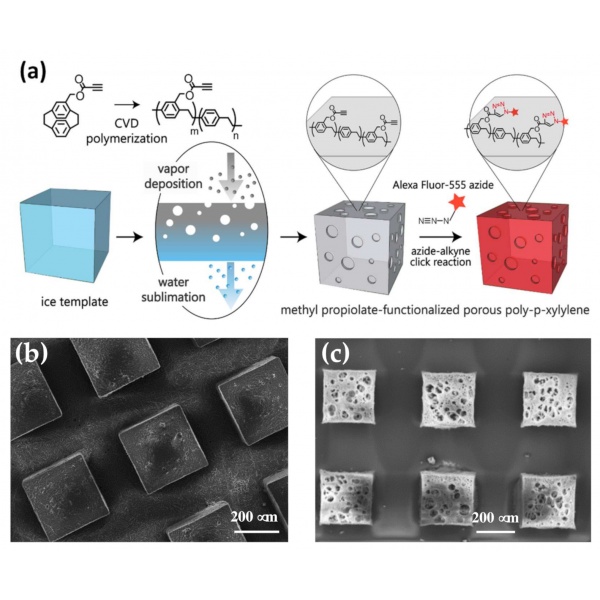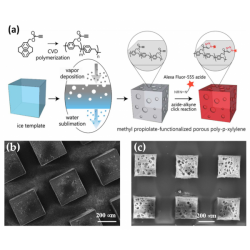Abstract
Conventional porous materials are mostly synthesized in solution-based methods involving solvents and initiators, and the functionalization of these porous materials usually requires additional and complex steps. In the current study, a methyl propiolate-functionalized porous poly-p-xylylene material was fabricated based on a unique vapor sublimation and deposition process. The process used a water solution and ice as the template with a customizable shape and dimensions, and the conventional chemical vapor deposition (CVD) polymerization of poly-p-xylylene on such an ice template formed a three-dimensional, porous poly-p-xylylene material with interconnected porous structures. More importantly, the functionality of methyl propiolate was well preserved by using methyl propiolate-substituted [2,2]-paracyclophane during the vapor deposition polymerization process and was installed in one step on the final porous poly-p-xylylene products. This functionality exhibited an intact structure and reactivity during the proposed vapor sublimation and deposition process and was proven to have no decomposition or side products after further characterization and conjugation experiments. The electron-withdrawing methyl propiolate group readily provided efficient alkynes as click azide-terminated molecules under copper-free and mild conditions at room temperature and in environmentally friendly solvents, such as water. The resulting methyl propiolate-functionalized porous poly-p-xylylene exhibited interface properties with clickable specific covalent attachment toward azide-terminated target molecules, which are widely available for drugs and biomolecules. The fabricated functional porous materials represent an advanced material featuring porous structures, a straightforward synthetic approach, and precise and controlled interface click chemistry, rendering long-term stability and efficacy to conjugate target functionalities that are expected to attract a variety of new applications.
KEYWORDS: vapor deposition, poly-p-xylylene, copper-free click chemistry, porous polymer, biointerface.png)

